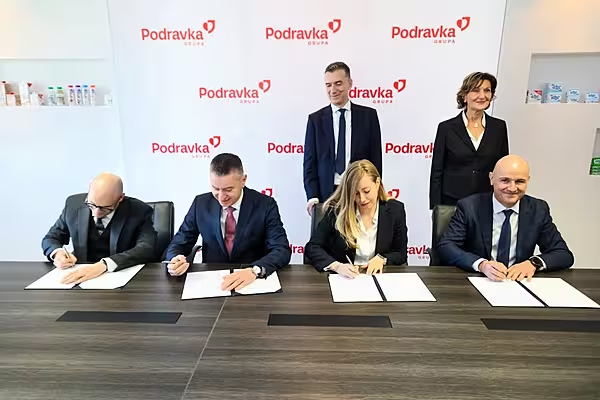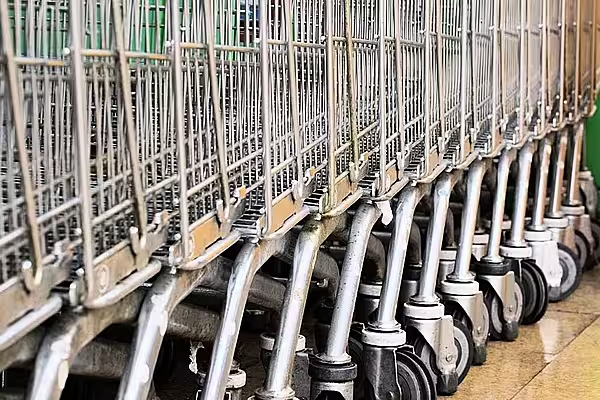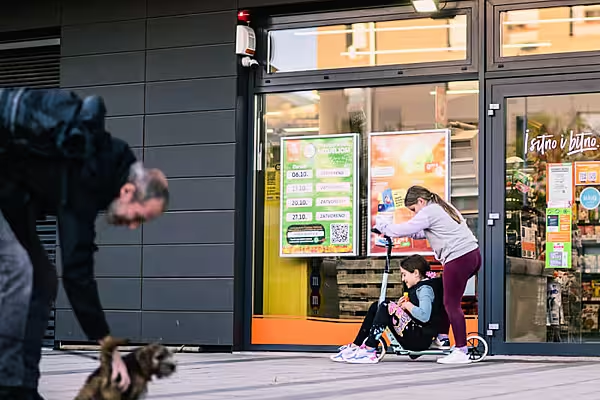ESM’s Robert McHugh travels to Croatia to catch up with Michal Seńczuk, the chief executive of rapidly growing retailer Studenac.
It has been over 15 years since I last visited the town of Split, on Croatia’s Adriatic Coast, and much has changed since then.
On the taxi ride from the airport, I was struck by the proliferation of new structures and malls that have been built since I was last in Croatia, in 2006.
The fascinating old architecture is still very much in evidence around the port – Diocletian’s Palace looks as spectacular as ever – however, interspersed with these traditional structures is the hustle and bustle of trendy bars, gourmet restaurants and designer stores.
Split may honour its rich heritage, but it is very much a modern city.
Enterprise And Innovation
This sense of enterprise and innovation is not exclusive to Split. Croatia, as a whole, is going through a transformation at the moment.
The country transitioned to the euro in January, and in the same month it became the 27th country to join Europe’s Schengen Area – the largest free travel zone in the world.
One company that seems to embody this new, feverish optimism in Croatia is Studenac.
Founded in 1991, Studenac is Croatia’s largest retail chain by number of stores, with almost 1,100 outlets. The company’s expansion accelerated in 2018, when it was purchased by regional equity fund Enterprise Investors.
Studenac opened 100 new locations organically in 2022, and 193 over the past five years. This year it plans to open 120, and the company is on track to reach a pace of 200 new stores per year, over the next few years.
Planning For The Future
In May, ESM sat down for an interview with Studenac CEO Michal Seńczuk to discuss what the future has in store for the Croatian retail chain.
“We finished last year with 1,069 stores, and we’ll end 2023 with 1,400 – with the difference coming from both organic growth and acquisitions,” Seńczuk tells ESM.
“It’s rapid growth, but we are prepared for that. There’s no guessing – we are confident that we will deliver this.”
Private-Label Differentiation
A big part of Studenac’s success story is how it has managed to leverage its private-label range with traditional products.
Studenac announced plans to expand its range of private-label products in December, including value-focused ranges and healthy alternatives.
“The story of our private label goes back to 2021, when we withdrew from a purchasing alliance in which we were sharing private-label products with other retailers,” says Seńczuk.
“We decided it was our time to leave and relaunch our own private-label products, to create a differentiation point for customers, but – even at that time – we knew it would not be easy because the penetration of private label in Croatia is quite low. It is currently 20%, while in other European countries it is as high as 37%.”
The group has introduced around 300 private-label SKUs over the past two years, including the brands Moje Jutro (dairy products), Frusecca (dried fruits and nuts) and Nuvolette (paper products).
Studenac is now expanding its offering, particularly in the fresh-food and impulse product segments.
Inflationary Situation
“We have [private-label] penetration of about 10%, and we believe a rational level to aim for is about 15% to 17% in the medium term, once all product lines have been launched,” says Seńczuk. “Of course, the inflationary situation is speeding this up. Last year, in 2022, we saw more than 70% growth across our private-label range, in value terms.
“This is due to two factors: the first is the relaunch of the products, and the second is the inflationary environment, which is making people more willing to experiment with private labels.”
Euro Transition
The last time that ESM paid a visit to Studenac, the retailer was busy preparing for the country’s transition to the euro currency, which commenced on 1 January 2023.
Studenac invested in employee training, an IT system upgrade and customer communication initiatives ahead of this seismic social event.
I ask Seńczuk how it went.
“It took a lot of work,” he admits. “Before the change happened, we were obliged to have dual pricing, so we had to put kuna prices and euro prices on the labels. A huge number of price labels had to be changed, along with all of our IT systems – everything in the back office.
“The change imposed big costs for every B2C business that has to post prices, not just retailers. We also chose to apply a voluntary code of ethics, so that our customers could be confident that we were being fair and transparent in the way we converted prices.”
A Worthwhile Investment
The investment seems to have paid off, as Seńczuk explains.
“So far, it’s still going smoothly,” he says. “People have got used to it. That’s the technical part of it, but what’s more important is that joining the Eurozone is good for the country. If you combine this with entering the Schengen Area, that’s tremendous.”
Now that Croatia has a new currency and no border controls with its EU neighbours, “there are optimistic but reliable forecasts that this will boost tourism by 40% over the next few years,” explains Seńczuk.
“There is more confidence. Tourists don’t have to change their money or think about exchange rates, and so on. This will also bring more investors into the country.”
Pop-Up Stores
One way that Studenac seems to be staying ahead of its competitors is with its clever and dynamic use of seasonal pop-up stores.
Croatian retailers have to face the ebbs and flows of the tourist season, like many other popular holiday destinations throughout Europe. Coastal towns and cities can become hugely populated in the summer season, but this may not be the case in winter.
Indeed, finding labour and qualified staff can also be a challenge, with Studenac needing an extra 1,000 staff members for the summer season alone.
“We are going to open at least ten pop-up stores this year, and if the project succeeds – and we believe it will because we already have the first numbers, and they are great – we will probably get to as much as 30% of total organic expansion from pop-ups,” says Seńczuk.
“I say it’s a perfect solution because if a location doesn’t work, you just move it somewhere else. From the perspective of the return on investment, it’s top class.”
Each Studenac pop-up store is small, covering some 14 square metres on average.
Seńczuk adds, “Even in one campground, which has capacity for 7-10,000 people, you could have three, four, five of them, so that’s going to be an amazing thing.”
‘Magic Formula’
Seńczuk believes that there is a unique element that has helped Studenac grow so dramatically in the past five years.
“I would like to emphasise the magic of our formula and the importance of Studenac stores in their local communities,” he explains. “With other, bigger formats, or in other countries, I would think very hard before opening a store in a place that has fewer than 3,000 inhabitants.
“That shows how valuable we are for local communities. Our proximity format serves a unique set of shopping missions.
“The second is [the] value of consumer time. In some regions of Croatia – for example, in Zagreb – people like to do their shopping as fast as they can, whereas in the islands, they like to spend as much time as they can in the store because they go there for the socialising element as well. The person that is serving you might be your neighbour.”
As to whether Seńczuk is pleased with the retailer’s recent growth?
“I am really enjoying Studenac because it is so different than working as just one part of a centralised retail group,” he says with a broad smile. “I really love this type of retail!”
© 2023 European Supermarket Magazine – your source for the latest retail news. Article by Robert McHugh. Click subscribe to sign up to ESM: European Supermarket Magazine.














